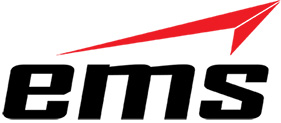 If you headed to the Additive Manufacturing hall at Euromold you would have seen clearly that 3D printing is becoming big business, both for rapid prototyping services and manufacturing. What would also have become clear though is that though 3D printing is the future exactly what will be the standard for 3D printing is still unclear but then maybe its success will come from the variety of ways it can be used and the fact that with the range of different 3D printing additive manufacturing machines you can make almost everything.
If you headed to the Additive Manufacturing hall at Euromold you would have seen clearly that 3D printing is becoming big business, both for rapid prototyping services and manufacturing. What would also have become clear though is that though 3D printing is the future exactly what will be the standard for 3D printing is still unclear but then maybe its success will come from the variety of ways it can be used and the fact that with the range of different 3D printing additive manufacturing machines you can make almost everything.
There were 300 or more additive manufacturing exhibitors at Euromold and most of them had a USP for their 3D printers. Some had prototypes, which will be able to do incredible things such as print circuit boards or items made of multiple materials once development is complete.
Other equipment on show creates items from powdered metal so it is possible to print items in metal such as titanium and with the strength of metal items made through other manufacturing processes.
Some of these 3D printers were aimed at small producers without the space for a
traditional production line meaning workshop businesses can produce items in less time for less money than larger competitors. Others are for businesses where they make many bespoke items, slightly different every time and not practical for production with production lines based on tooling.
Then there are machines that are aimed much more squarely at the rapid prototyping services industry. Many of these machines will go to companies who are looking to get new products to market much more quickly and for less money. Printing a prototype from a 3D CAD file is quicker and more accurate than building a model meaning that items can be tested and shown to consumer panels and then easily adapted and printed again. Rapid prototyping services companies as well though are in many cases buying these machines to be able to supply customers with a much better service and product working directly from a designer’s files.
With desktop models though and other small but more advanced 3D printers such as Z
Corporation’s Z Printer it is likely more and more companies will bring their Rapid Prototyping services in house where they develop products regularly. Such printers can also be used to make molds for the manufacturing process that cut down setup time by weeks and saves thousands of dollars.
As well as 3D printing cutting costs, saving time and saving space in production and rapid prototyping services it can also do things that traditional manufacturing can’t. For example Belgian company Materialise can make accurate artificial hips that can’t be mass produced by traditional tooling and other manufacturing as hips have detailed curves that must be completely accurate, plus sizes need to be exact for people. Totally bespoke hips can be setup quickly and printed with accuracy to the nearest micron on Materialise’s 3D printers.

